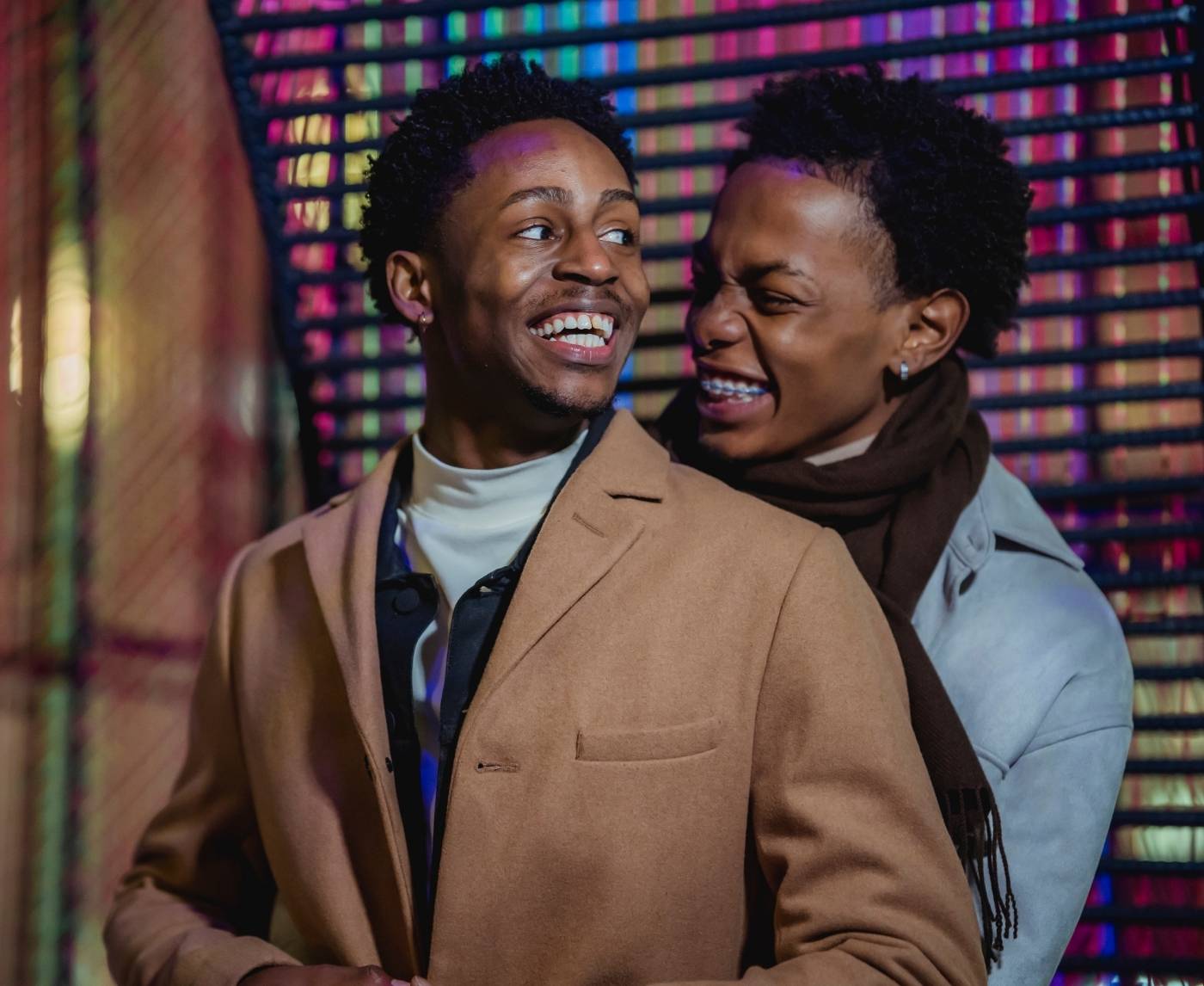Quick Answer: HIV rates are higher in Black gay men due to a complex mix of systemic racism, healthcare barriers, stigma, and social dynamics, not just personal behavior. Protection starts with regular testing, better access to care, and culturally relevant support.
Why This Isn’t Just About Sex
Let’s clear something up from the start: higher HIV rates among Black queer men are not the result of riskier sexual behavior. Study after study confirms that Black men who have sex with men (MSM) do not have more partners, riskier sex, or lower condom usage than their white counterparts. What they do have is something far more dangerous: fewer protections, less access to healthcare, and systems that fail them consistently.
According to the CDC, Black gay and bisexual men account for approximately 26% of new HIV diagnoses in the U.S., despite representing a small fraction of the total population. For younger Black MSM aged 25–34, the numbers are especially stark, infection rates are nearly eight times higher than in white MSM of the same age group.
So what gives? If it’s not behavior, what’s behind these numbers?
- Access to Healthcare: Black queer men are less likely to have health insurance, access affirming care, or receive regular STD screenings, all of which increases undiagnosed and untreated infections.
- Medical Mistrust: Centuries of racism, mistreatment, and exploitation (think Tuskegee) have led many Black men to avoid or delay care, especially around sensitive topics like HIV.
- Stigma Within and Outside the Community: HIV is still heavily stigmatized, both culturally and socially. Silence, shame, and fear often prevent open conversations and early detection.
“I was outed at my church and basically shunned,” says Dante, 32, a Black gay man in Atlanta living with HIV. “They didn’t even know I had HIV, just that I was gay. So when I did test positive, I kept it secret for years.”
This isn’t rare. Stigma doesn’t just isolate, it kills. It prevents people from getting tested, from disclosing to partners, from accessing PrEP or PEP, and from living their full lives. That’s the real risk.
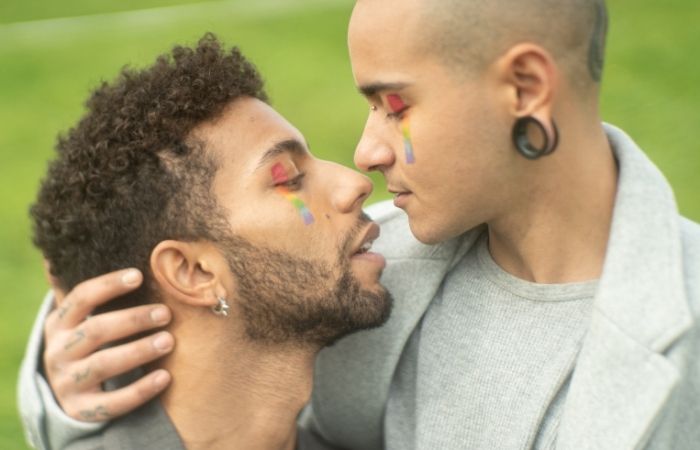
People are also reading: STD 101: The Most Common Sexually Transmitted Diseases You Shouldn’t Ignore
The Role of Culture: Silence, Masculinity, and Respectability
To understand the crisis, we also have to look within. Black communities, like all communities, are not monoliths. But there are cultural themes that intersect deeply with HIV risk among queer men, including:
- Respectability Politics: The unspoken rule that Black men should appear “strong,” “clean,” or “successful” often prevents real talk about sexuality, risk, or vulnerability.
- Religious Trauma: For many, the Black church is both a place of refuge and repression. Homosexuality may be demonized, creating shame and secrecy that drives untested, hidden infections.
- Masculinity Norms: The pressure to present as hypermasculine or “down low” creates double lives, risky encounters, and avoidance of community resources that appear “too gay.”
Put simply: HIV thrives in silence. And that silence is often cultural, not just personal. But this isn’t about blame. This is about truth. And truth gives us something to work with.
Hookup Apps: Tool or Trap?
Let’s talk about Grindr, Jack’d, and every app in between. For many Black queer men, hookup apps are a lifeline, a way to meet, connect, and feel desired in a world that often marginalizes them. But these apps can also become risky terrain when used without support, safety, or honesty.
What makes them complicated?
- Anonymity: Discreet profiles and ghosting culture make disclosure of HIV status rare, and meaningful conversations about testing nearly nonexistent.
- Location-Based Pairing: In areas with high HIV prevalence, like parts of the South, users are more likely to unknowingly encounter partners with undiagnosed HIV.
- “No Fats, No Fems, No Blacks”: Racism and body shaming within the apps fuel self-esteem issues and risky behavior in those seeking validation through sex.
Jamal, 27, who lives in Baltimore, shares:
“I used to think, ‘If they don’t ask, I don’t tell.’ I was afraid they’d ghost if I brought up testing or status. Now I realize silence helped no one, including me.”
These apps aren’t inherently bad. But relying on them without regular testing, honest conversations, and internal boundaries turns them into risk vectors. Especially when cultural silence around queerness makes them one of the only ways Black queer men can connect safely, or so it feels.
Check Your STD Status in Minutes
Test at Home with RemediumHIV Rapid Test Kit
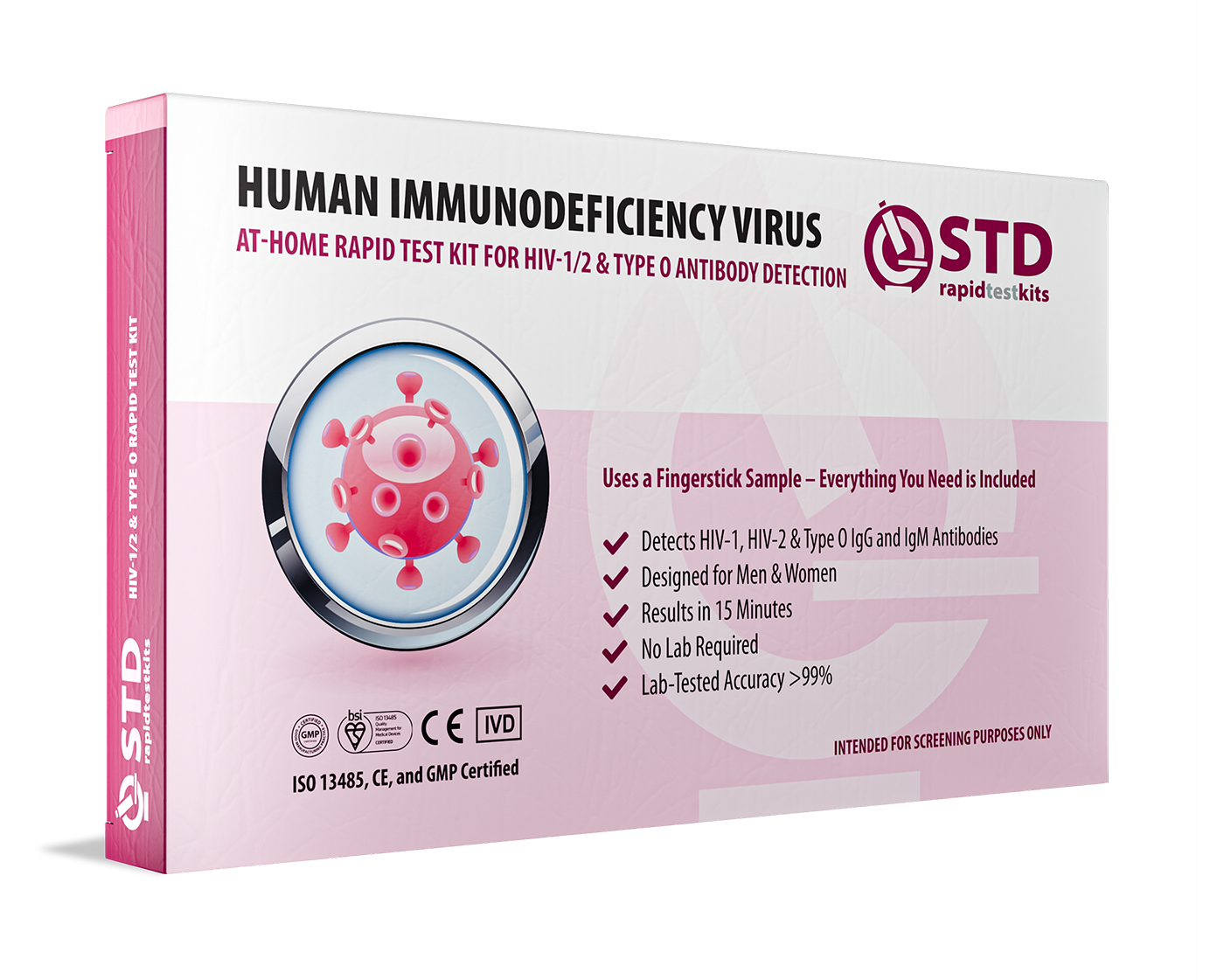
 For Men & Women
For Men & Women Results in Minutes
Results in Minutes No Lab Needed
No Lab Needed Private & Discreet
Private & DiscreetOrder Now $33.99 $49.00
The Numbers: What the Data Actually Says
The data paints a brutal picture, but it’s important to face it head-on:
- 1 in 2 Black gay men in the U.S. are projected to be diagnosed with HIV in their lifetime if current rates persist. (CDC)
- Only 42% of Black MSM living with HIV are virally suppressed, compared to 60% of white MSM. (Kaiser Family Foundation)
- Black MSM are less likely to be offered PrEP by their healthcare providers than white MSM, despite being more at risk. (Bogart et al., 2020)
This isn’t about failure on the part of Black queer men. It’s about institutional breakdowns in prevention, treatment, and communication. The numbers are bad, but they are not inevitable. That’s where the power lies.
Solutions: What Actually Helps?
If you’re Black, queer, and tired of hearing the same old “use a condom” advice, you’re not alone. Prevention isn’t just about rubber and rules. It’s about access, dignity, and trust.
Here’s what’s actually working:
- At-Home STD and HIV Test Kits: Fast, private, and discreet. No waiting rooms. No judgment. Order yours here.
- Culturally-Led Health Campaigns: Initiatives like “Greater Than AIDS” and “We Are Family” reach Black MSM where they are, emotionally, visually, and socially.
- Peer-Based Interventions: Programs using Black queer educators, peer counselors, or influencers see higher success rates in getting men tested and on PrEP.
- Accessible PrEP and PEP: Programs offering free or low-cost access without ID or insurance barriers make a huge difference.
“When I found out I could test at home, it changed everything,” says Marcus, 34. “Now I test every three months, and I’ve helped three of my friends start too.”
Stigma and Structural Neglect: The Invisible Epidemic
If there’s a virus bigger than HIV in the lives of Black queer men, it might be silence. Silence around testing. Around status. Around queerness. Around pain. And it’s not accidental, it’s structural.
Black queer men navigate a healthcare system not built for them, inside communities where being openly gay can still mean rejection, violence, or loss. Add HIV stigma on top of that, and you get a perfect storm of untreated infections and internalized fear.
Structural stigma shows up as
- Clinics with no LGBTQ signage or language
- Doctors who assume heterosexuality or preach abstinence
- Faith leaders pushing HIV as punishment for sin
- Family members who call it “a white man’s disease”
“When I went to get tested, the nurse said, ‘You don’t look like the type,’” said Raymond, 30. “What does that even mean? I almost walked out.”
That type of microaggression keeps people from coming back. And when people don’t come back, they don’t get tested. They don’t get PrEP. They don’t get treated. That’s how HIV wins.
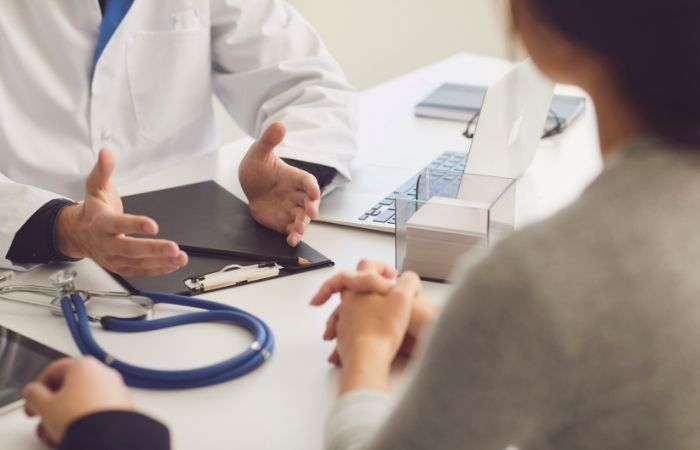
People are also reading: Why STD Rates Are Rising Fast, and What You Can Do to Protect Yourself
Culturally Rooted Solutions: Not Just Prevention, But Empowerment
So what actually works when prevention campaigns meet real life for Black queer men? Here's where we shift from blame to action, and from generic to cultural.
Normalize Testing Through Culture, Not Fear
Include testing in barbershop talk, in community centers, in memes, in sex-ed TikTok. Make it a routine, not a confession. Especially with at-home kits now available, it’s easier than ever to make testing a personal ritual.
Meet Men Where They Are (Literally)
Mobile testing vans at pride events, local Black-owned clubs, and community churches are key. Programs that understand language, style, and social codes of Black queer culture perform better, and build trust faster.
Reframe PrEP and PEP as Tools of Power
Instead of “you should take this,” flip the narrative: “You deserve to be protected, on your own terms.” There’s a radical beauty in saying: “This is mine. My body. My control.”
Train Providers in Cultural Competency, or Replace Them
If your doctor won’t talk about PrEP, won’t ask about your partners, or flinches when you say “he,” find someone else. Medical bias kills, and you deserve better.
Rebuild from Within
Empower Black queer men to lead these initiatives, not just be subjects of them. From podcast hosts to nonprofit directors, the people most affected must also be the ones holding the mic. When prevention becomes personal, cultural, and community-owned, HIV doesn’t stand a chance.
The Future: Hope, Resilience, and Ownership
Despite the numbers, the future isn’t written yet. HIV does not have to be a rite of passage for Black gay men. In fact, for many, it’s not. But what turns the tide isn’t just meds and condoms. It’s conversation. It’s honesty. It’s access. It’s empowerment.
And yes, it’s also about tools. Like testing kits you can use at home. Like PrEP you can pick up without shame. Like platforms that say, “You are not alone.”
We are living through a cultural shift, where Black queer voices are louder, prouder, and more powerful than ever. But that power only works if it’s paired with information, access, and care that sees you fully.
So ask the hard questions. Get tested. Take control. This isn’t just about HIV, it’s about your life. And you deserve to live it loudly, safely, and with every tool available to you.
Check Your STD Status in Minutes
Test at Home with Remedium7-in-1 STD Test Kit

 For Men & Women
For Men & Women Results in Minutes
Results in Minutes No Lab Needed
No Lab Needed Private & Discreet
Private & DiscreetOrder Now $129.00 $343.00
For all 7 tests
Personal Stories: Silence, Survival, and Strength
Data gives us numbers. Stories give us truth. And in the lives of Black queer men, that truth is often shaped by survival in a healthcare system that overlooks them, in families that silence them, and in communities where their existence is still debated.
Terrance, 29, from New Orleans, shares:
“I was already living with anxiety from being Black and gay in the South. When I tested positive at 24, I thought, 'That’s it. My life’s over.’ But finding a support group , mostly other Black gay men , saved me. It was the first time I didn’t feel broken.”
These stories are everywhere, if you know where to look. Some are triumphant. Others are quietly heartbreaking. But almost all have a common thread: late diagnosis, fear of rejection, and the healing power of connection.
Key takeaways from real lives
- Early testing saves lives: Most people with HIV today live full, healthy lives, especially if they start treatment early. But you have to know first.
- Disclosure gets easier: The more you talk, the easier it gets. To yourself. To friends. To partners. Shame feeds in silence.
- Support is everything: Whether it's a Facebook group, a community center, or a chosen family, Black queer men deserve support that sees all of them.
This epidemic isn’t faceless. It's built on names, voices, and lived truths. And every time a Black queer man gets tested, shares his story, or refuses to disappear , the needle moves.
The Role of Faith, Family, and Forgiveness
Faith and family are often central pillars in Black communities, and they can either be protective or deeply wounding. For many Black gay men, the church has been a site of both trauma and transformation. It’s where they first heard that queerness was a sin. And sometimes, it’s where they were eventually welcomed back with open arms.
Faith doesn’t have to be a barrier to HIV prevention. In fact, many churches are now stepping up, hosting testing events, welcoming queer members, and fighting stigma from the pulpit. But there’s still work to do.
Family silence is another form of harm. When no one talks about sex, HIV, or queerness, myths thrive. Testing gets delayed. Statuses go undisclosed. Prevention becomes impossible.
And yet, many Black queer men are building new definitions of family, rooted in care, not blood. In communities where blood relatives may be absent or harmful, chosen families fill the gap, offering:
- Emotional safety, a place where status, identity, and desire can be discussed without shame
- Shared tools, like test kits, PrEP referrals, and the name of a non-judgmental clinic
- Accountability, people who will ask, “When’s your next test?” and mean it
Forgiveness, whether for others or for ourselves , is also part of this journey. If you delayed testing, ignored symptoms, or stayed quiet because you were scared, you’re not alone. And you’re not broken. Start now. Heal forward.
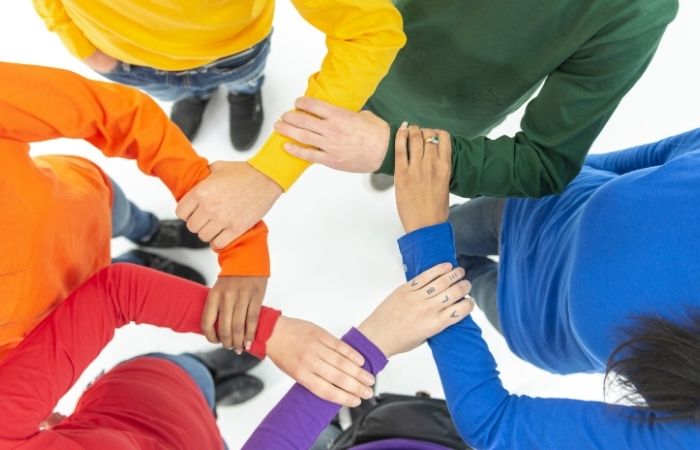
People are also reading: Home vs. Clinic STD Testing: Which is Better for Your Health?
FAQs
1. Can Black men really get HIV more easily?
No one is biologically more prone to HIV. Higher rates in Black gay men come from systemic barriers, stigma, and healthcare disparities, not genetics or behavior.
2. What are the early signs of HIV in men?
Flu-like symptoms, rash, fever, night sweats, or swollen lymph nodes are common early signs, but many people have no symptoms at all. Regular testing is key.
3. Can I get HIV from someone who looks healthy?
Yes. HIV has no visual signs. Someone can look and feel fine but still transmit the virus, especially if they're undiagnosed or not on treatment.
4. How accurate are at-home HIV tests?
Very accurate when used correctly. FDA-approved at-home HIV tests like those from STD Rapid Test Kits have high reliability and are easy to use privately.
5. Does PrEP really work for Black gay men?
Yes. PrEP is up to 99% effective when taken consistently, regardless of race. The real barrier is access, not efficacy.
6. What if I’m on the “down low”? Can I still get help?
Absolutely. Confidential, at-home testing and online PrEP services allow discreet care. You don’t need to be out to take control of your health.
7. How often should I test for HIV?
Every 3 months is recommended if you're sexually active with multiple partners or not on PrEP. Testing regularly normalizes care and catches infections early.
8. Is HIV still a death sentence?
No. With treatment, people with HIV live long, full lives. The key is early detection, ongoing care, and viral suppression.
9. Can I get HIV from oral sex?
Yes, but the risk is lower than anal sex. Factors like open sores, gum disease, or ejaculation increase risk. Use protection where possible.
10. How can I bring up testing with a partner?
Try: “I get tested regularly, want to do it together?” or “I like to keep us both safe. When was your last test?” Normalize the conversation with care.
Conclusion: This Isn’t About Blame, It’s About Power
The HIV crisis among Black queer men isn’t a result of individual choices. It’s the outcome of systemic neglect, cultural silence, medical racism, and years of being excluded from conversations that directly affect your survival. But this isn’t where the story has to end.
If you’ve ever felt invisible in a waiting room, dismissed by a doctor, or afraid to even say the word “HIV," know this: you are not the problem. And you are not alone.
Protection is not just physical. It’s cultural. Emotional. Structural. And yes, it’s personal, too. It starts with:
- Getting tested regularly, with tools that work for you.
- Learning the real data and using it to advocate for yourself
- Finding or creating support systems where your identity isn’t a liability
- Refusing to let stigma write your story
Whether you’re negative, positive, scared, or unsure, your health matters. Your future matters. And you deserve every tool, every option, and every chance to live your life fully and unapologetically.
This isn’t just about HIV. This is about Black queer men reclaiming the right to exist safely, in their bodies, in their beds, in their communities, and in their power.
Sources
1. Higher HIV Rates Among Gay & Bisexual Men — CDC Vital Signs
2. Fast Facts: HIV and Gay & Bisexual Men — CDC
3. The Impact of HIV on Black People in the U.S. — KFF






